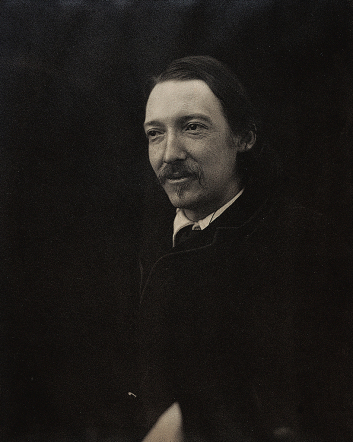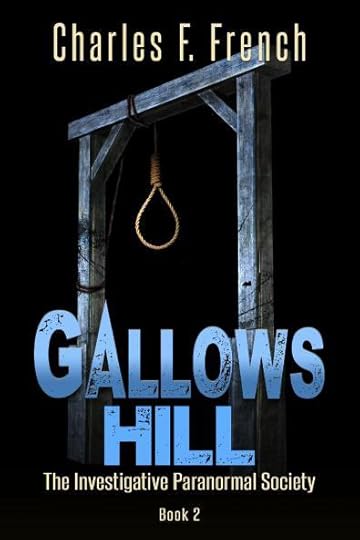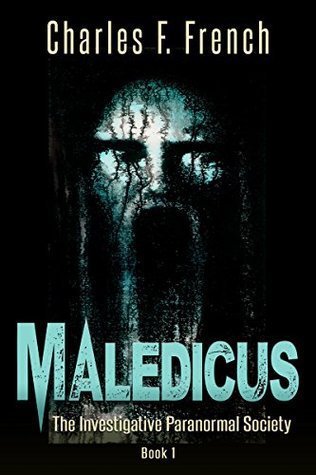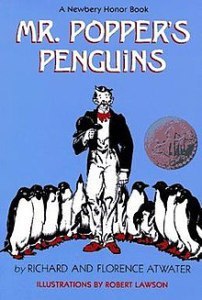K.D. Dowdall's Blog, page 44
February 15, 2018
Jami Gold’s Resources for Writers
I’ve written over 700 posts on my blog, most geared toward writers. Sign up for my newsletter to receive new blog posts every Tuesday and Thursday. The links below highlight some of the most useful and helpful posts so far (or use the search box in the sidebar to find information about a specific topic). https://jamigold.com/for-writers/
Learn about Writing: Tip-heavy posts about writing skills and concepts
Planning Your Story: Story planning tips and advice
Writing Your Story: Drafting tips and advice
Editing Your Story: Editing tips and advice
Selling Your Story: Queries, synopses, and packaging tips and advice
Self-Publishing Your Story: Self-publishing insights and tips
Beta Reading & Critiquing: Beta reading/critiquing tips and advice
Career Planning for Writers: Branding and goal planning
Social Media & Authors: Blogging, social media, and online reputations
The Publishing Business: Agents, publishers, and publishing paths
Writing Life: Encouragement for the ups and downs of writing
Favorite Writing Blogs and Resources
Fiction University by author Janice Hardy (excellent writing craft advice) and her team of guest authors (for more writing and publishing advice), including the Indie Author Series, where I’m a faculty member/guest blogger
Writers Helping Writers (The Bookshelf Muse) by authors Angela Ackerman and Becca Puglisi (home of writing thesauruses for brainstorming unique emotion, settings, weather, and sensory information, etc.)
One Stop for Writers by Angela and Becca, the same team as above and the authors of the fantastic Emotion Thesaurus, created an online version of all their thesaurus collections and tools
Writer’s Knowledge Base by author/link-collector Elizabeth Spann Craig (the search engine for writers)
storyfix.com by author Larry Brooks (great breakdown of story structure; author of Story Engineering)
warriorwriters by author/social media expert Kristen Lamb (fantastic advice about writing and publishing industry; home of #MyWANA)
edittorrent by editors Theresa Stevens and Alicia Rasley (writing advice and publishing news from editors)
Favorite Writing Tools and Resources
OneNote : A free, full-featured application for saving research notes, planning our story, capturing photos and ideas, etc. And everything is searchable. Squee!
Dropbox : Never lose your writing! Internet-based, password-secure storage to access your work from any connected device (computer, phone, tablet). Ta-da! Instant backups. *smile*
Evernote : A great little access-anywhere note-taking application. I use this for everything from grocery lists to remembering that cool name for a character I saw in a movie’s credits.
Scrivener : Writing tool for planning, drafting, and ebook formatting. I mostly use this for drafting, but the possibilities are endless. (For Windows and Mac)
TechSurgeons : Need a (better) website/blog? TechSurgeons specializes in author services (and understands our neuroses!). Super reliable, kick*ss support, and technical geniuses. (Why yes, they’ve saved my site more times than I can count. *smile*)
Favorite Writing Craft and Reference Books
Click here for a listing of writing craft and reference books I’ve used and/or discussed on my blog
February 14, 2018
A Valentine Heart!
Ah, my Valentine,
In all the world,
You may find,
A few appealing faces,
Yet, in all the world,
You will never find,
A face as full of love,
As mine.
K. D. Dowdall 2018 [image error]
February 13, 2018
The Writing Craft: Novel Openings to Avoid by Jami Gold
Jami Gold has the most complete Writing Tips, Writing Resources, Editing Resources and they are all unbelievably wonderful! I am posting one of dozens of great writing tips, plus so much more. http://www.jamigold.com I discovered Jami Gold on Anne Allen’s blog and she also presents wonderful writing tips!http://www.annerallen.com
I found the following writing tip to be exactly what I needed to know and so interesting – who knew? Jami did!
Novel Openings to Avoid:
1) Weather reports: the famous opening line, “It was a dark and stormy night” may keep contemporary audiences aware of Lord Bulwer-Lytton’s otherwise forgettable 1830 novel, Paul Clifford, but not in a good way. Opening with meteorological events isn’t only a problem with people who’ve read too much Victorian literature. Our television-saturated brains tend to think in terms of the “establishing shot” of a screenplay. But, a novel needs more than pictures to connect with the reader. It needs human emotion.
2) Morning wake-ups: showing your character waking up or getting ready for work/school hits the snooze button for readers. In a movie or TV show, you can show one character getting ready for work and it’s interesting. In the cable TV series, Dexter, the serial killer/protagonist’s morning ablutions open every episode. But in a book, where you couldn’t have the creepy-comic music and double-entendre blood orange shots, the same scene would bore us silly.
3) Dreams: some people call this the “Dallas” opening, because of the TV soap that got written into such a corner the writers had to pretend a whole season was “just a dream.” Writers sometimes try to hook readers by opening with a scene of surreal horror—but if it all turns out to be a dream or a video game on page three, the reader feels tricked.
4) The death of the protagonist: This is apparently very, very big with the paranormal/horror crowd. If your MC is a zombie, vampire, or other member of the undead community, think of something else. This has been done, um, to death.
5) Trains, planes and automobiles: if your character is en route and musing about where he’s been and where he’s going, you’re not into your story yet. Jump ahead to where the story really starts.
6) Funerals: Slush readers say a huge number of manuscripts—especially memoirs—start with the protagonist in a state of bereavement. But most readers aren’t eager to embark on a literary journey with a miserable MC.
7) “If I’d known then what I know now…” starting with the conditional perfect may seem clever to you, but unfortunately it does to a lot of other writers, too. This is cliché territory—don’t go there.
8) Personal introductions: starting with “my name is…” has been way overdone, especially in YA. Again, not a bad idea, but too many people thought of it first.
9) Minor characters speaking or thinking. The story-telling old man, the child—any detached observer telling the tale will only distance the reader. Whoever/whatever we meet first becomes foremost in our minds, and readers will want to go back to that character. Make the first person you meet an important member of the cast, not a spear-carrier.
10) Reader-Feeder dialogue, also known as “As you Know, Bob.”
“I must retrieve the elusive magical jewelry item,” says Bob. “Without it, I cannot access my rightful powers—and my evil Uncle Murray will usurp my domain.”“But as you know, Bob,” says Sidekick. “The magical jewelry item is in the hands of the four skanky queens of the Bingo Borogroves and guarded by the Dire Dragoons of Doom. We will be risking our very lives.” Sidekick is not saying this for Bob’s benefit. He’s saying it for ours. Conversational info-dumps are never a good idea.
11) Group activities: don’t overwhelm your reader with too many characters right off the bat. It’s like meeting a bunch of people at a cocktail party: you don’t remember anybody’s name if you hear too many at once.
12) Internal monologue: Musing is boring. Especially reader-feeder musing. “Back when I was younger, I would have slain the dragoons with my magic sword, but when my parents were killed in that chariot crash on the way to get Borogrovian take-out, and my Uncle Murray had me locked up in the Dark Tower of Doom, the skanky queens stole my magic sword and melted it down to make a necklace and a pair of matching earrings…” We don’t need to know this all on the first page. Bring in backstory later.
13) Too much action: Writing gurus keep telling us to start with action, action, action, but this isn’t actually such good advice. We need to be emotionally engaged with a character before we care how many dragoons of doom he slays.
***
Quotations on Reading
Beautiful. These quotes describe with certainty, what it feels like to loose yourself into a book where all else disappears around as you read.
 charles french words reading and writing
charles french words reading and writing

“And reading itself is an amazing activity: You glance at a thin, flat object made from a tree…and the voice of the author begins to speak inside your head. (Hello!)”
Carl Sagan

(https://commons.wikimedia.org)
“I kept always two books in my pocket, one to read, one to write in.”
Robert Louis Stevenson

“Reading is the sole means by which we slip, involuntarily, often helplessly, into another’s skin, another’s voice, another’s soul.”
…
View original post 18 more words
February 12, 2018
A Review: Wicca Girl, The Flowering
This story is a heartfelt journey of the present and past world of wise women, often referred to is Wicca Healers that were mercilessly hunted, tortured and executed for witchcraft. Califia Montalvo, the author, weaves a story rich with complex characters, mystery and suspense. The protagonist is Simi, a young girl who is mystified at the supernatural events that occur and appear to be connected to her. As she matures into womanhood she learns to harness this ability to create forces that can change people’s lives. She eventually learns of a surprising explanation of why hers is a life always at the forefront of what appears to be mysterious paranormal events.
There are journeys in this engaging story that relate to the present, in times past, throughout history, that enfold into the story regarding the treatment of women healers during the time of the witch trial executions that lasted over a hundred years, where tens of thousands of women healers were burned at the stake. This historical matter adds to the complexity of the story in a well-thought out manner.
Montalvo’s story is a plethora of fascinating details regarding the women that were persecuted for their intelligence, their communion with nature, and what others saw as inexplicable knowledge deemed mysterious, even evil, as they used their ability heal others. I found this novel to be well-written with interesting details that made me glad I did not live in an early time when any woman could be charged with witchcraft. I highly recommend The Wicca Girl, the Flowering.
February 10, 2018
To Love The Journey #poem
This is profound, Didi, these are wise poetic words that tell the tale of moving on through the journey of life, gaining self-knowledge and self-assurance.
Time ticks on,
Constant, it’s steady.
As is the journey,
It comes as we’re ready.
We let ourselves search,
Push through fog, and some moss.
But by loving the road,
We handle this trip like a boss.

Gallows Hill by Charles F. French is Now Available for pre-order!
I had the pleasure of being a Beta reader for Gallow’s Hill, by author Charles French, and it is one scary book, but beautiful too. I highly recommend it. 5 of 5 stars!!
 charles french words reading and writing
charles french words reading and writing

My book, Gallows Hill: The Investigative Paranormal Society, Book 2, which continues the story of the Investigative Paranormal Society of Bethberg, PA, is now available for pre-order for Kindle on Amazon! It will be released on Kindle on February 14!
You can find my book by either clicking on this link Gallows Hill , or you can simply go to Amazon and enter Charles F. French.
This is book 2 in what is now a 4 part series, and the focus in this novel is on Sam Sadlowski, a retried homicide detective. Each book in the series is focused on one of the main characters. If that is a bit confusing, because originally there were 3 members of this society, it is explained in this novel.
I am finishing the formatting for the print book, and I will let you know when it is ready.

Please follow the following…
View original post 22 more words
February 9, 2018
Some days, a beautiful sunset . . .
This is a beautiful poem!

“Some days, a beautiful sunset
with your best friend
can be one of the most
peaceful and relaxing meditations
of the day”
~ Charles M. Shultz
Photo credit: Waftings from the Ether https://web.facebook.com/Waftings-from-the-Ether-388467361318607/
February 8, 2018
Mr. Popper’s Penguins and Calling 911
Jennie, this is brilliant and thank you for posting. This is how children learn as you explained. Questions engage children to think, make decisions, and see the gray between the black and white.
Every day of chapter reading is an adventure; a roller coaster of wonder, laughter, and even sadness. Reading the words aloud to children without any pictures means that we stop to talk and ask questions.
As children hear the words, their brains are in “flux capacitor” mode. With only words to hear, the brain has to work overtime to make a mental picture, and more importantly process the story. That means thinking, reasoning, and asking questions. All in a moment.
That’s what happens every day at chapter reading.
Mr. Popper’s Penguins is our current chapter reading book, and a favorite. We’re close to the end. Mr. Popper and his penguins have been sent to jail. They caused chaos in the wrong theater with Swen Swenson and his trained seals. The penguins were disturbers of the peace. The police and firemen (firefighters was not a word back in 1938) were called. …
View original post 406 more words
February 6, 2018
DANGER WALKS HERE!
[image error]It happened in a small farming community in the northwestern part of Connecticut that also included a large forest preserve, a once glacial river, now a bubbling brook, a lake, and a spring-fed pond. The community’s roots began in 1680, as The Salmon Brook Settlement that was also home to Native Americans like the Tunix, the Massaco, and the Mohegan.
It was a perfect summer day. The morning was cool and the sky was a brilliant Periwinkle blue. The deep, dense forest was a monolith of wonder for elementary school age kids. The ancient woods that the Salmon Brook flowed through provided the Native Americans with all manner of fish, fowl, and river animals, like beavers.
Evidence of their inhabitation lingers still in the form of arrowheads, pathways, in meadows that were once crop producing fields, where they once grew tobacco, beans, squash, and corn, as well as middens of shells like clams, mussels and turtles were eagerly searched for in the forest. There were plenty of bones to find too, mostly animal, but sometimes, human bones that would be exposed as they washed up on the rocky river banks.
On this beautiful summer morning, a small band of kids, having traversed deeply into the forest, smelled smoke and considered it to be a fisherman on the river or the nearby lake. At first, nothing much was thought about it. The smoke seemed to be coming from some distance away.
Taken aback by what she was seeing, one of the older members of the group of five children, yelled out, “FIRE!” All heads turned to the leader of the group, who stood mesmerized by the yellow-orange fingers of flame surrounding a giant oak tree, that appeared to touch the sky it was so tall. The forest fire was closing in around them, silently sneaking up on them, until it roared like a lion. The fire then leapt among the tree tops, high into the sky, turning the blue sky into a purple twilight, billowing with fire.
Like deer, caught in the headlights of an on-coming car, they frozen in fear. Suddenly, they ran, following their leader to an old wagon wheel road where giant, thick oaks lined the road, that was little more, now, than a pathway. They ran and out of the corner of their eyes the watched the fire exploded into the giant oaks behind them. As they ran, animals of all kinds joined in their fierce desire to escape the flames that were now, 40, 50, 60, 100 feet in the air and animals ran alongside of the five children. The leader was shocked to find a black bear keeping pace at her side and deer leaping everywhere. Wild turkeys, Foxes, Porcupines, Skunks, Woodchucks, all, ran with the humans, side by side on the narrow path, until the path widened as they reached an open field and ahead of them was Canton road and fire trucks with long hoses and a helicopter overhead. The parents of the children were kept back by officers and firemen.
The children emerged, blackened with smoke, wild-eyed with fear, and the animals took off in different directions, some crossing the road to the other side were safety could be found, unmindful of the crowd gathered on Canton Road. The children, now at the point of exhaustion, collapsed into their parent’s arms as the firefighters dosed them with cool, clear water.
This was a day the five children would never forget. I will always remember the black bear running by my side. I remember how we looked at each other, the black bear and I—with a look that was “will we get out of this alive?” It was as if we saved each other and we were a team. It was amazing. I will always remember the look he gave me as he turned to run into the safety of the tall bushes and another part of the forest, he turned and stopped for a moment, like he was saying, thank you and nodded his head.
By K. D. Dowdall







